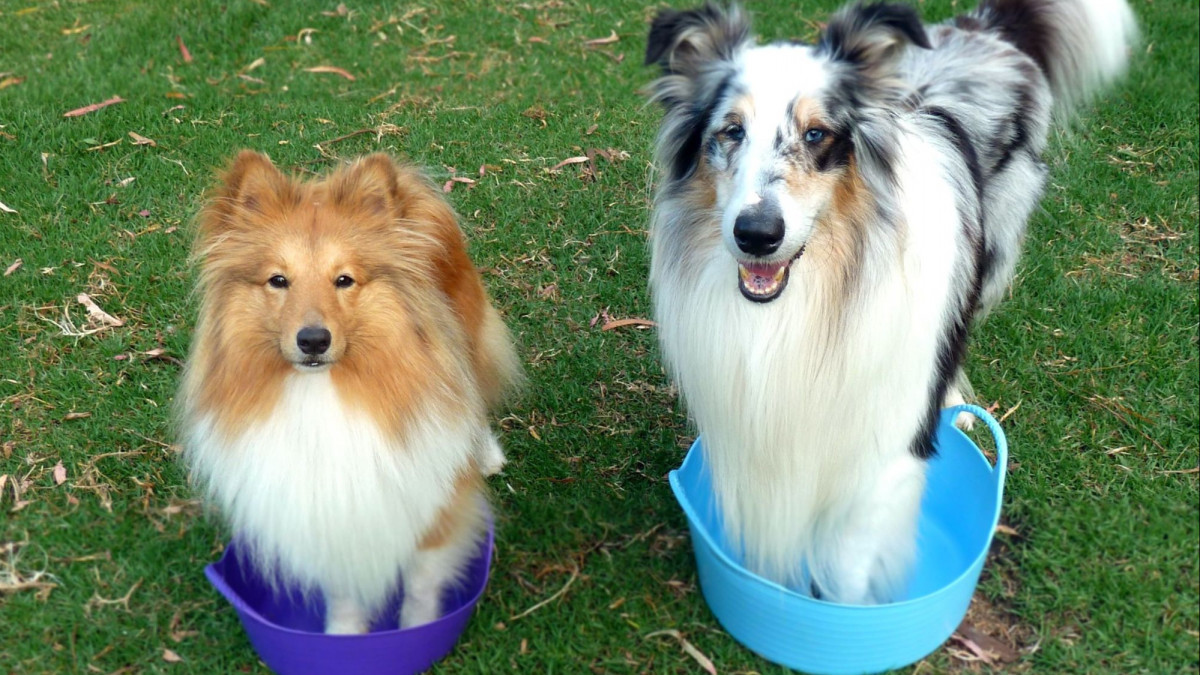For all the dogs who've touched our hearts
Why Dance Around a Dog’s Arthritis?

How did learning canine freestyle dance moves help Merlin cope with his arthritis?

Why do we train our dogs?
Different people have different answers. For some it’s about control, for others fun, for most it’s to make life easier. There are even people who refuse to train believing it suppresses natural instincts. Many dog owners don’t consciously train, but within the ebb and flow of their lives together they train what is necessary.
Training is teaching. If you live with a dog you will always teach whether you are aware of it or not. And of course, they teach us.
Training should be life-enhancing for our dogs, it should reduce stress, enable freedom and promote welfare. I was reminded of this recently when a veterinary physiotherapist worked with Merlin; I was very grateful for our training.

Two left paws
If you've been following my blog, you will know that Merlin has serious health issues. He was to be my first sports dog, trained from scratch using positive reinforcement; specifically clicker training. I was so excited to explore what we could do together, but it wasn’t to be.
I started Merlin’s training enthusiastically, working on behaviours that would help us have fun in dance. Merlin was never a particularly well-coordinated dog; in fact, he was downright clumsy. I thought this was because he was a young, sizable male. Some dogs seem to be born with grace and ease, but others need to develop it.
Merlin however, never got any better. He continued to fall off the platform, shuffled awkwardly around the pivot and quite frankly, couldn’t jump to save himself. He always tried so hard!


Waiting on the pivot block for his physiotherapy rotations

Diagnosis arthritis
As his health issues worsened, my training focussed on making Merlin’s life easier and more comfortable. Although I revisited some of what I had taught to get my TAKL accreditation, I knew I couldn’t expect too much. I shelved these behaviours in favour of ones that had a more practical and direct benefit for him.
At Merlin’s last health check the vet informed me gloomily that my poor boy has arthritis. This explained his problems with movement. Sadly, so many things now made sense.
Merlin was only 4 years old.
The vet’s recommendation was ongoing pain killers and to see a veterinary sports rehabilitation practitioner for body work and a rehab programme.
I had little idea of what would be involved in a rehabilitation programme but realised there would be a degree of physical manipulation involved. I was a bit concerned about how Merlin would react to a stranger ‘poking and prodding’ him, but we have done a lot of training with handling, and I knew he would trust me to get him through it.

Very Merley manipulations
I am super fussy about who I let handle my dogs, but Dr. Anna Sim’s gentle and professional attitude quickly won us all over. We talked for a bit about Merlin’s issues while the dogs sniffed and relaxed in her company. Anna asked Merlin to drop (down) and began to physically manoeuvre him onto his side. I asked her to wait and cued him to lie flat, which he did readily.
Anna was able to perform her manipulations while I fed and reassured Merlin. It was very strange for him, but because the behaviour was familiar and I had been using this position for grooming, it all passed with minimum stress.
After the therapy was finished Anna and I stood up telling Merlin “All done”. My funny boy sat up looking at us but then flopped back onto his side – obviously he wanted more!


Happy dog happy me
Merlin responded very well to the physiotherapy. The next day he ran laps around the backyard and played with Bonnie. He hadn’t done that for over a year. I stood watching him crying.
To maintain Merlin’s flexibility, promote muscle strength and correct conformation, Dr. Anna prescribed a home exercise programme. To my delight they included the very things I taught him when we were doing our dance training! We may never compete in competitions, but Merlin can continue to strut his stuff in order to keep himself in peak physical condition. What a great reason to train!
You never know, I may choreograph a little dance one day.

Something to aim for?
If you don’t know what doggy dancing is, or you do and love it, treat yourself to this beautiful routine by Carolyn Scott and Rookie. Dance, tricks and training in general can be used to create wonderful, moving pieces like this, OR just keep your beloved dog strong, healthy and happy.
Well…perhaps this is a little out of our reach!

If your dog has stiffness or pain, please consult a veterinarian.

Resources and further reading
Musculoskeletal system and arthritis
Components of Musculoskeletal System in Dogs, MSD Manual, Veterinary Manual
Overview of Musculoskeletal Disorders and Diseases in Dogs, MSD Manual, Veterinary Manual
I think my dog has arthritis, what can I do? RSPCA Knowledge Base
Arthritis in Dogs,Osteoarthritis in Canines Signs and Symptoms, vet west
Lots of GREAT articles and alternatives to conventional therapies found HERE: Healthy Pets, Dr. Karen Becker
For people in my area, I can’t recommend the services of Dr. Anna Sim highly enough! Wags and Whiskers – LOVING YOUR PETS
Dogs in Motion, Canine Rehabilitation: Check out their massage course HERE
Two Sisters Healing Arts, Facebook page (watch this space!)
Antinol; recommended to Merlin for pain relief

Dancing with dogs
Canine Freestyle: Teaching Your Dog to Dance, the Bark magazine
The World Canine Freestyle Organization

You might also like



Comments



Categories: : Health and welfare
Comments
Never miss a thing!

 Julie van Schie
Julie van Schie 



